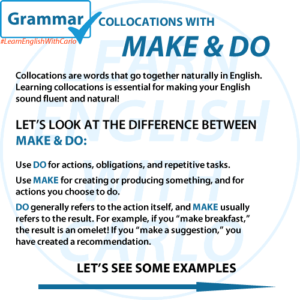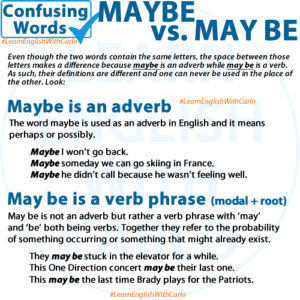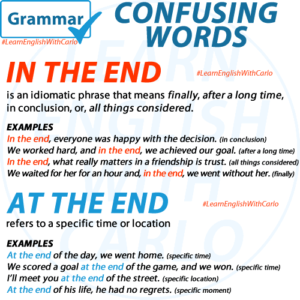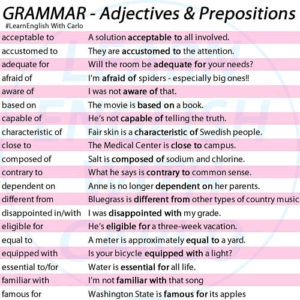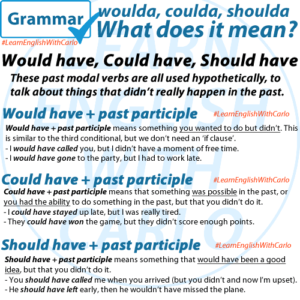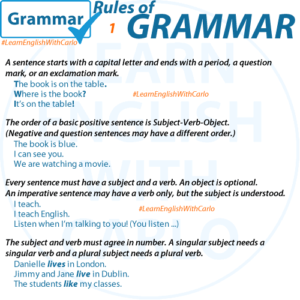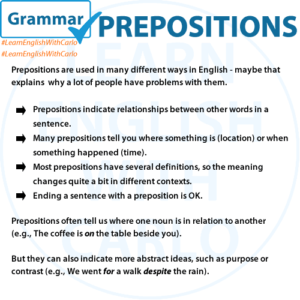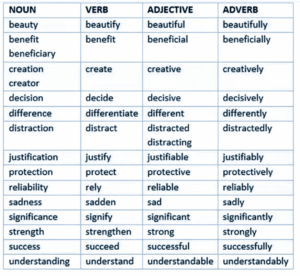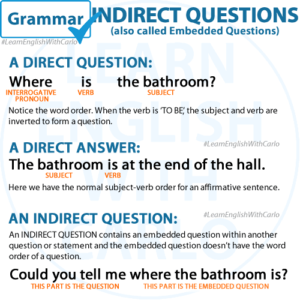Collocations are words that go together naturally in English.Learning collocations is essential for making your English sound fluent and natural! LET’S LOOK AT THE DIFFERENCE BETWEEN MAKE & DO:Use DO for actions, obligations, and repetitive tasks.Use MAKE for creating or producing something, and for actions you choose to do. DO generally refers to the action …
Category: INSTAGRAM
Images I've posted to Instagram
Permanent link to this article: https://englishyourway.com.br/grammar-collocations-with-make-do/
Sep 28
GRAMMAR – MAYBE vs MAY BE
MAYBE vs MAY BE Even though the two words contain the same letters, the space between those letters makes a difference because maybe is an adverb while may be is a verb. As such, their definitions are different and one can never be used in the place of the other. Look: MAY BE (Verb Phrase) …
Permanent link to this article: https://englishyourway.com.br/grammar-maybe-vs-may-be/
Sep 26
GRAMMAR – AT THE END vs IN THE END
GRAMMAR – AT THE END vs IN THE END English learners often confuse the phrases at the end and in the end because they sound similar. However, their meanings and usage are distinct. Let’s break them down and look at some examples to help you use these phrases correctly. What Does AT THE END Mean? …
Permanent link to this article: https://englishyourway.com.br/grammar-at-the-end-vs-in-the-end/
Permanent link to this article: https://englishyourway.com.br/adjectives-with-prepositions/
Sep 18
Woulda, Coulda, Shoulda – What Does It Mean?
You may have heard native English speakers use phrases like woulda, coulda, or shoulda. But what do they mean? These are informal, spoken forms of would have, could have, and should have. These past modal verbs are used to talk about things that didn’t happen, but that we imagine or wish had been different. Let’s …
Permanent link to this article: https://englishyourway.com.br/woulda-coulda-shoulda/
Sep 17
Essential English Grammar Rules for ESL Learners
Mastering English grammar helps you communicate clearly and naturally. Here’s a guide to some fundamental rules, complete with examples and exceptions to be aware of. 1. Indefinite Articles (A/An) 2. Countable and Uncountable Nouns with Quantifiers 3. Possessive Form with Apostrophes 4. Active vs. Passive Voice 5. Contractions: ‘He’d’, ‘They’d’, and More 6. Proper Nouns …
Permanent link to this article: https://englishyourway.com.br/essential-english-grammar-rules-for-esl-learners/
Sep 15
The Difference Between “Used to” and “Would”
When talking about past habits or repeated actions, learners of English often encounter two phrases: “used to” and “would.” While these two expressions have similarities, they are not interchangeable in every context. Let’s explore their meanings, uses, and differences in detail. What Does “Used to” Mean? “Used to” refers to habits, actions, or states that …
Permanent link to this article: https://englishyourway.com.br/used-to-vs-would/
Sep 11
GRAMMAR – Prepositions
Types of Prepositions The different types of prepositions are used to provide us with different information with regard to time (prepositions of time), place (prepositions of place), and direction (prepositions of movement). Besides these three, there are others: prepositions of manner and prepositions of cause and reason. Time: We’ve been working since yesterday.Direction: Go to …
Permanent link to this article: https://englishyourway.com.br/grammar-prepositions-2/
Sep 10
WORD FORMS
Welcome to our guide on how words can take different forms as nouns, verbs, adjectives, and adverbs! Many words in English change form depending on their role in a sentence, and understanding these transformations is key to mastering grammar and building vocabulary. Here you’ll find tables that show how specific words change across these categories, …
Permanent link to this article: https://englishyourway.com.br/noun-verb-adjective-adverb/
Sep 07
Indirect Questions
Indirect questions are a polite and often more formal way of asking questions. They differ from direct questions in their structure and use. Let’s break down what indirect questions are, how to form them, and provide examples to illustrate their use. What Are Indirect Questions? Indirect questions are questions embedded within statements or other questions. …
Permanent link to this article: https://englishyourway.com.br/indirect-questions/

